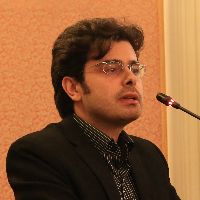Introduction and Study of the Ghat’eA Contemporary Genre in Iranian Classical Music Composition: A Case Study Chakâd by Parviz Meshkatian
The tradition of composed pieces in Iranian classical music has developed in the last century and has deeply changed the musical culture. However, the tradition of preserving certain characteristic elements is practiced widely. Study of this repertoire could lead us to a theory of contemporary classical tradition in Iranian compositions. By analyzing certain works, the research reveals that certain concepts are introduced as effective components for Iranian composition. These concepts include: genre, form, process of composition, texture, connection of poetry and music (especially vocal works) and orchestration. In the following study, Chakâd an instrumental piece by Parviz Meshkatian is one of the leading works, analyzed from three aspects of genre, form and polyphony. Examining these components presents the compositional qualities of the work and makes it possible to clarify the framework of composition, the nature of formal thought, as well as the way of weaving in this tradition with contemporary compositional methods. This study, leads us to an introduction of a newer genre in Iranian tradition that has been taking shape since the last century called Ghat’e. Ghat’e is a composed instrumental genre that contains characteristics of all traditional instrumental genres like Pish-darâmad, Chahâr-mezrâb and Reng and simultaneously is totally distinguished from them. This name literally means piece but now, it is becoming a special name for a form of instrumental composition which is more important and lengthy than traditional ones. The Ghat’e throughout its inception, is seeking to being an independent musical language from Radif. The works in this genre try to reach a musical language which can be self-sufficient, especially without the intervention of words. Trying to reach a musical framework without verbal language, essentially leads to a group of criteria that bring together certain aspects of formal thought and structure. These works might be composed in traditional classic forms (like binary, ternary, rondo etc.) or not, but the principle is that all of them have this criteria of formal thought, in order to shape its music form. In the field of polyphony, Chakâd is not an initial example but rather a successful one because it persuaded many musicians that there is a way to organize a polyphonic texture without essentially functional harmony or counterpoint principles. By bringing together a number of polyphonic tips from the classical and older Iranian tradition, this piece makes a texture with two or three different melodic lines while not abiding by Western polyphonic composition. Although, naturally we can hear some chords and harmonic intervals they are not specifically functional or deliberate.
- حق عضویت دریافتی صرف حمایت از نشریات عضو و نگهداری، تکمیل و توسعه مگیران میشود.
- پرداخت حق اشتراک و دانلود مقالات اجازه بازنشر آن در سایر رسانههای چاپی و دیجیتال را به کاربر نمیدهد.



